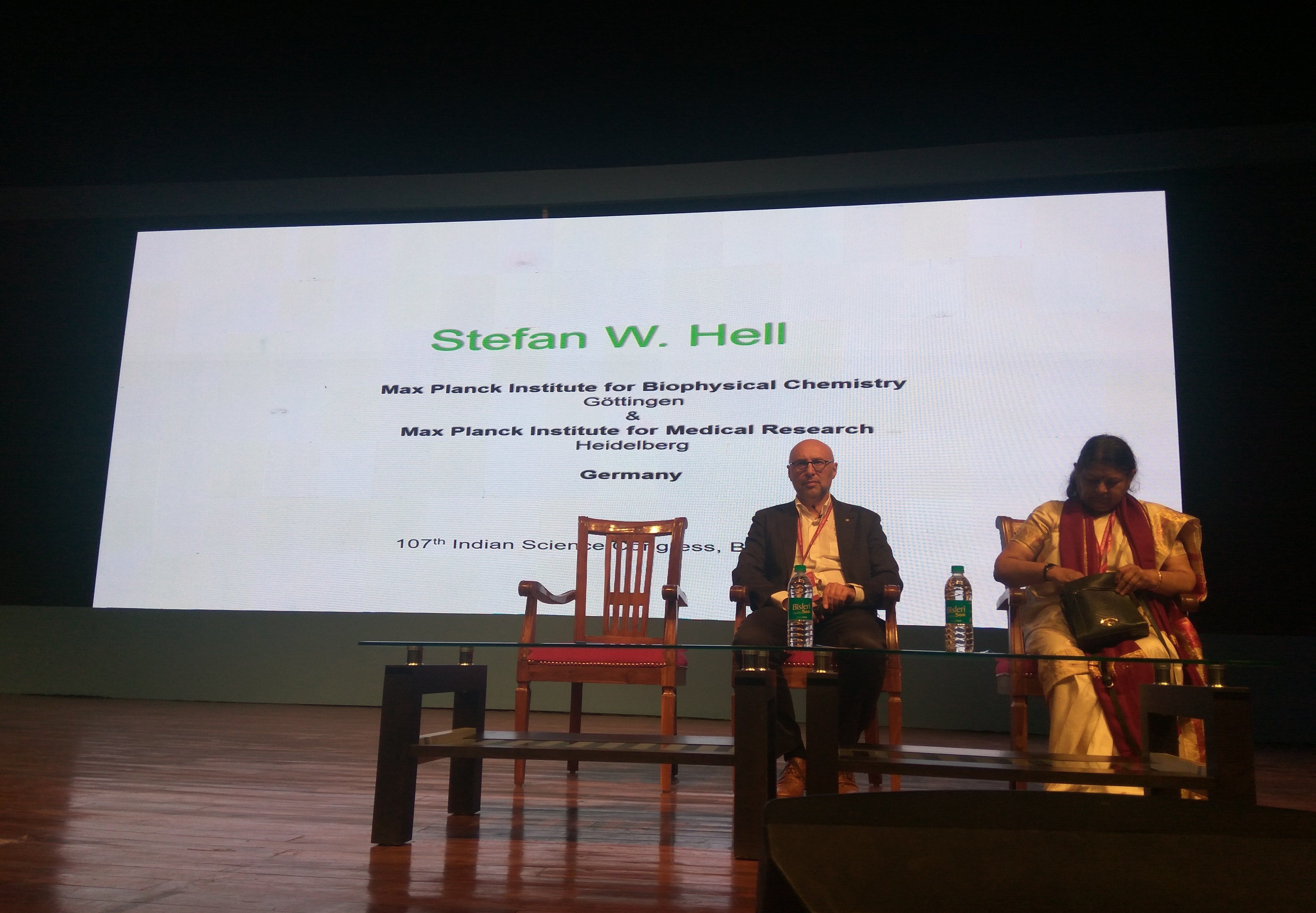
Professor Stefan W. Hell the Nobel Laureate in Chemistry 2014, traced his journey as a youngster from a village in Romania to winning the Nobel Prize for the breakthrough in flouresence microscopy at the public lecture at the 107th Indian Science Congress at University of Agricultural Sciences, Bengaluru.
He said that he had wanted to become a theoretical physicist and then ended up measuring chips, suitable for microscopes.
“I persuaded my parents to move from Romania and landed up in Ludwigshafen in Germany. I was fortunate that it was close to University of Heidelberg where I went on to pursue my higher education”.
“I wanted to work on theoretical physics but my friends persuaded me that field was not conducive to being gainfully employed. So I signed up with a professor who had a startup company which selected computer chips which were suitable for electron microscope,” he added.
The young scientist was depressed thinking that he was wasting his time measuring chips when he found a way to gain from his situation.
Frustrated with working on ‘low level science’ he searched for a gap that could be addressed in microscopy. He finally zeroed in on a search to find a way to break the diffraction barrier in microscopy.
Nobody believed in him and through his struggle the fun of working on something fascinating pulled him on. After a couple of rejections he managed to secure a position in Max Plank Institute and then turned around a grant rejected through consensus, to a positive response which supported him to prove his work.
Finally his work on development of super-resolved fluorescence microscopy which he carried out despite the trying times in his career went on to win the Nobel Prize for crossing the threshold of microscopy.
Addressing the youngsters gathered at the Indian Science congress, Professor Hell stressed that consensus is not always reality and yet it is difficult to challenge consensus. However, one should aim high and stay grounded to achieve fundamental advancements which are mostly fascinatingly simple.
Stefan W. Hell (born in 1962) received his doctorate in physics from the University of Heidelberg in 1990, followed by a research stay at the European Molecular Biology Laboratory in Heidelberg. From 1993 to 1996, he worked as a senior researcher at the University of Turku, Finland, where he developed the principle of STED microscopy. In 1997, he moved to the Max Planck Institute (MPI) for Biophysical Chemistry in Göttingen (Germany), where he set up his research group dedicated to sub-diffraction-resolution microscopy. He was appointed as Max Planck Director there and was elected as scientific member of the Max Planck Society in 2002. Hell currently heads the Department of NanoBiophotonics at the MPI for Biophysical Chemistry in Göttingen. At the same time, he is Director at the MPI for Medical Research in Heidelberg (Germany) where he heads the Department of Optical Nanoscopy.






























